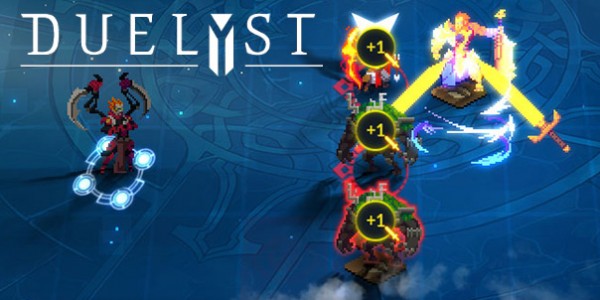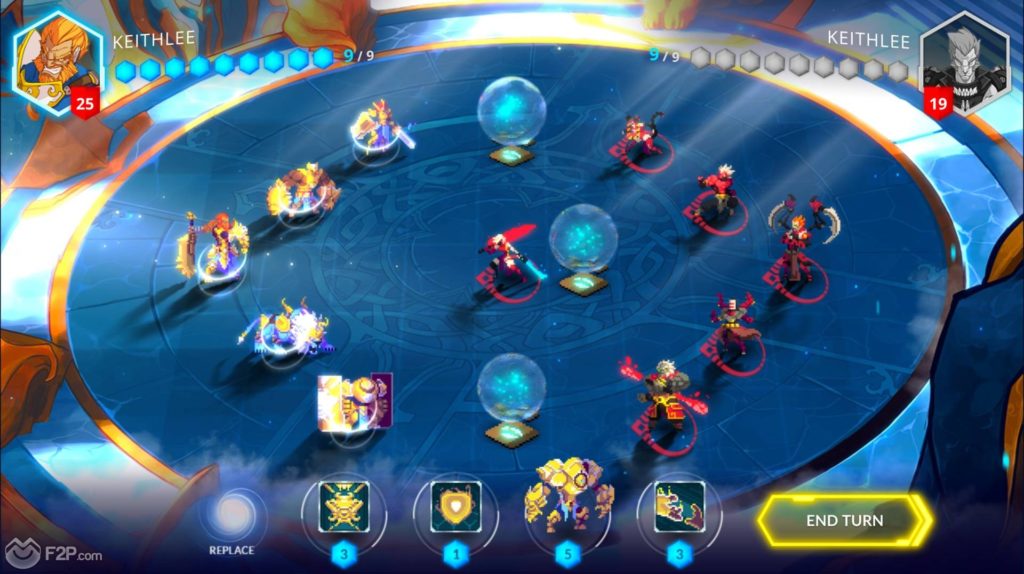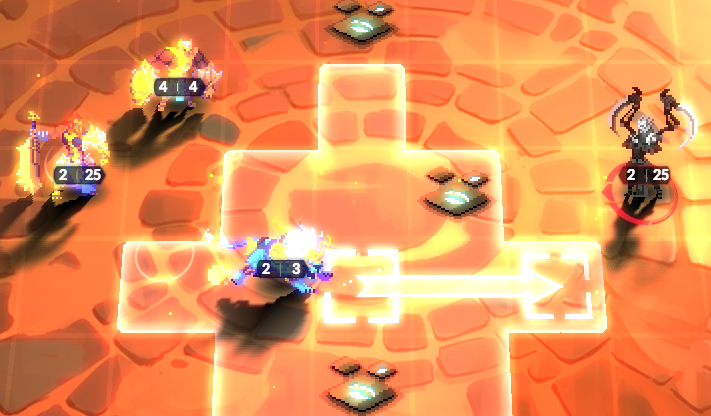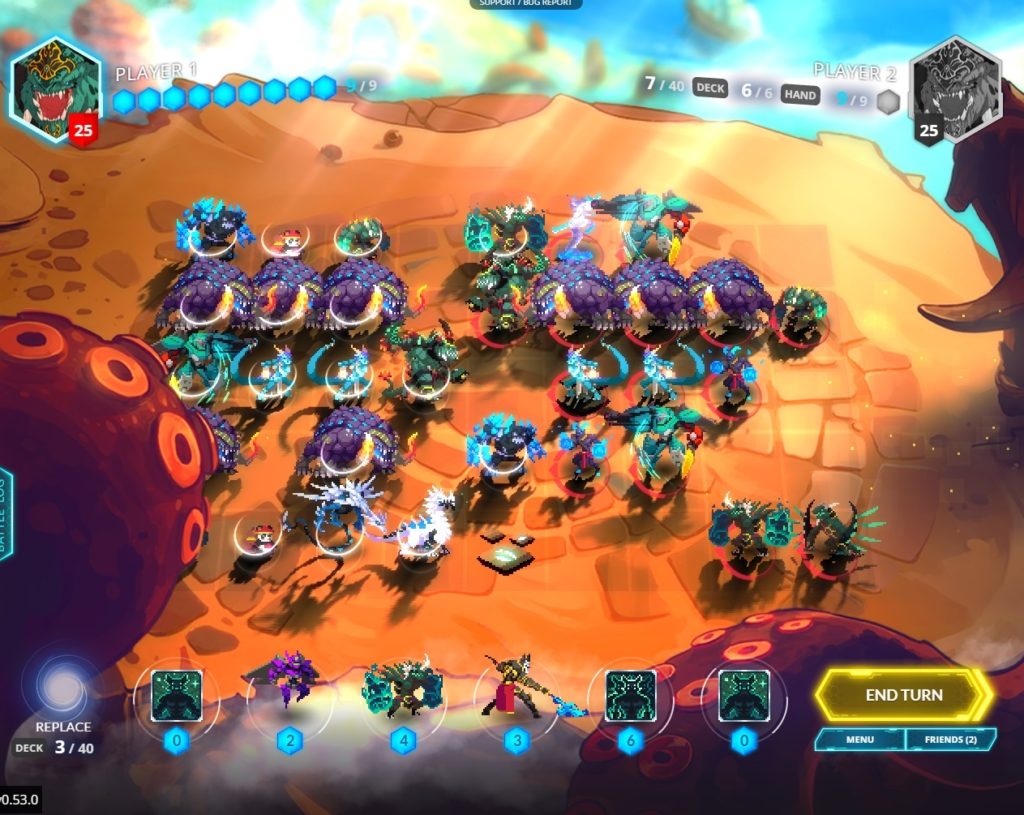So let’s talk about Duelyst.

From the moment I saw this game, I figured I’d enjoyed it. Described as a combination of Hearthstone, Final Fantasy Tactics, and Hero Academy (I’m not even sure what that is, or whether or not I want to find out), technically Duelyst does fit in the “computer collectible card game” genre. Its main differentiating factor comes from the playing field, seen here:

Your health pool, in this case, is attached to a General. Generals can place minions cards on tiles around them (barring the special attributes of the minions in question), cast spells, and the like with their mana pool; as in Hearthstone, you gain one additional mana per turn. The blue orbs on this screen are Mana Orbs, which count as the equivalent of The Coin in Hearthstone (that is, they give you an extra mana for the turn), but they also function as a strategic resource since placing minions on them counts as touching them. For better or worse, Duelyst plays a lot like Hearthstone, down to Deathrattles (Dying Wish) and Battlecrys (Opening Gambits). Obviously there’s some wrinkles in the card design unique to the game, but functionally we’re still playing a TCG of some sort.
However, there’s a few big differences beyond that. The process of “mulliganing” tries to reduce the randomness of card games to little avail – sometimes, you just get dealt a bad hand (as in life!). In Duelyst, however, the system functions quite differently. Each and every turn, you can replace a card in your current “hand” (up to six cards) with any other randomly picked card from your deck. Considering the small deck size (40 cards) and number of card copies (3) you can have in any one deck, this encourages much, much more consistency in deck construction than Hearthstone can muster. I assume we’re meant to think of the deck as less of a loose collection of cards, and more an army with some hint of randomness. For those who like the random elements, Duelyst places a firm emphasis in the “strategy” camp more than “fun things are happening!” Perhaps it’s not as glamorous as Yogg-Saron slinging a million random spells until someone wins, but some prefer the quiet joys of outwitting a skilled opponent.

Not surprisingly, that’s what makes the playing field so interesting in multiplayer: you place cards on a 5 x 9 tiled field, where positioning becomes an essential part of the strategy. Minions that can move other minions are fantastic for this very reason, since every one of the 6 factions (think Heroes from Hearthstone) uses minions in the different way. Lyonar plays a lot like Paladins, with lots of heals and minion buffs, while Songhai plays like a strange combination of the Rogue’s Combo mechanics with Hunter long-range weaponry attached. As well, each faction has two Generals, and each one gives you a different Bloodborn Spell that perform functions like teleporting minions or giving attack buffs. Knowing the optimal positioning for your faction choice proves to become a very, very big deal.
And, I would wager, this becomes one of the biggest hurdles to overcome for the new player: all of this information simply isn’t intuitive. Sure, moving units around a battlefield’s easy enough, but just like Hearthstone, the game itself lacks any sort of effective tutorial. This is a dense, complex strategy game, and I can’t say that I quite understand it. The user interface also doesn’t help matters; the cards that your opponent used come up for what feels like a split second before I can even read what’s happening! That’s a bit of a problem in a game like this; whereas Hearthstone lets you see the card being played (and the entire log of the game, located on the left hand side of the board), Duelyst’s interface doesn’t present this information clearly enough.

Even further, I honestly didn’t get some of the mechanics until I looked them up outside of the game – not exactly a good sign, all said. What the heck is Celerity? According to Duelyst, “This minion may activate twice per turn.” What does that means? Does that mean it can do two things per turn? Apparently it means that, maybe, but even the official wiki seems a little confusing on that point. Just describe the thing on the card if it doesn’t make sense! How hard is this!?
Still, I think that’s a problem with all CCG games: the learning curve requires lots and lots of play, along with tons and tons of knowledge, to really make a dent in the game’s systems. Hearthstone has a similar problem, although it’s more intuitive by default due to the nature of the game’s simpler playing field. Duelyst, on the other hand, carries the burden of CCG’s steep, cliff-like learning curve with the finer points of tactical RPG combat.

And that makes it very difficult for me to wrap my head around it, quite honestly. I’m not sure whether that’s because I’m bad at video games, or that this game just requires the sort of time investment that I already made with Hearthstone (that took me a few months to even play at a decent clip, goodness). Add the gated unlock system for cards (yet another Hearthstone carry-over that I will never not hate) and getting blasted by other opponents isn’t too unlikely.
But, is it worth it? I can’t say yet, since I didn’t play enough, but it could be. For a free-to-play game, it’s surprisingly not “pay to win”, if the games I’ve played have anything to do with it. Rather, I lack the required understanding of the game necessary to actually evaluate it. I’d rather not be ignorant on this point, since the game itself plays quite well – I just lack any notion of strategic placement, apparently! But, I’m not going to be the stubborn guy – I think Duelyst is worth a shot, provided you give it a go.
8 I will instruct you and teach you in the way which you should go;
I will counsel you with My eye upon you.
9 Do not be as the horse or as the mule which have no understanding,
Whose trappings include bit and bridle to hold them in check,
Otherwise they will not come near to you.Psalm 32
